
I am turning my attention back to refining the new Court Garden. How did we manage before digital cameras? They make it so easy to track change. This was where we started with a blank canvas.
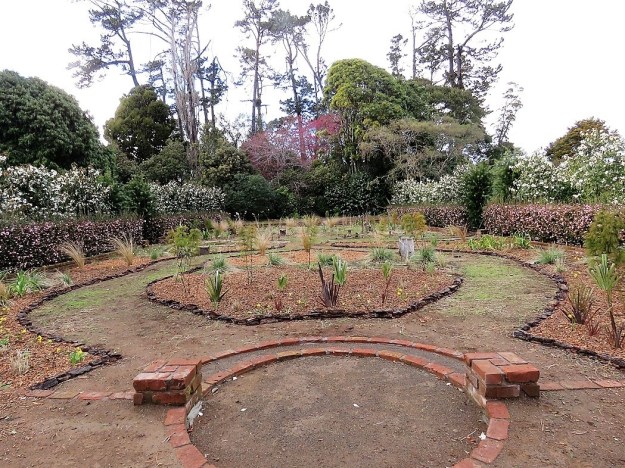
A year later and I had done most of the planting and the steps were in place. If you look carefully, you may see some little spots of yellow. I drifted many dwarf narcissi through to add early spring interest. This winter will be my last chance to locate them and remove them before they are forever swamped in the grasslands.
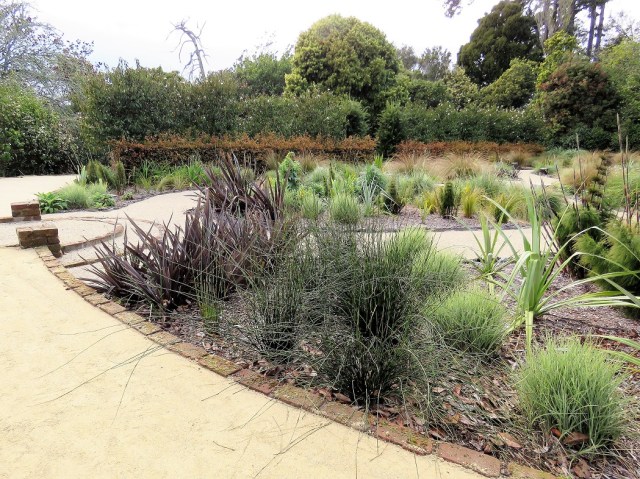
This is how it looked when we opened for the garden festival last spring, when we had completed the paths. It was the first viewing by members of the public and most visitors loved it.
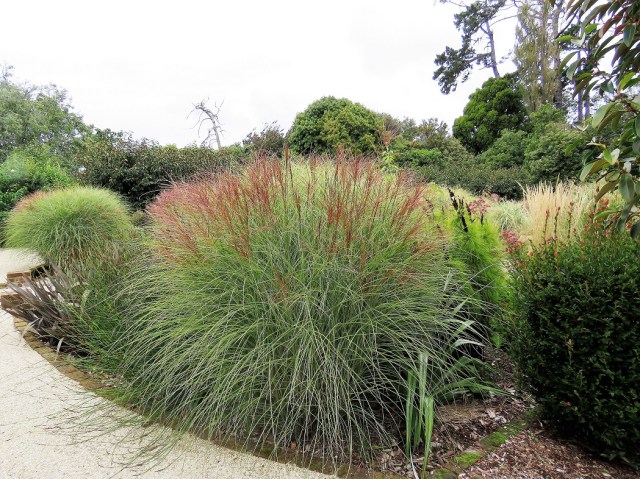
This is the same view, four months later. The growth has been well in excess of what we expected. This is the result of planting into fresh ground although the soils would not have been particularly fertile after being under nursery weedmat for three decades. We have not fertilised anything. Nor did I use compost to enrich the soil. We did, however, cultivate the ground before planting and mulch afterwards. While planting, I squished a gazillion grass grubs that I unearthed as I went.
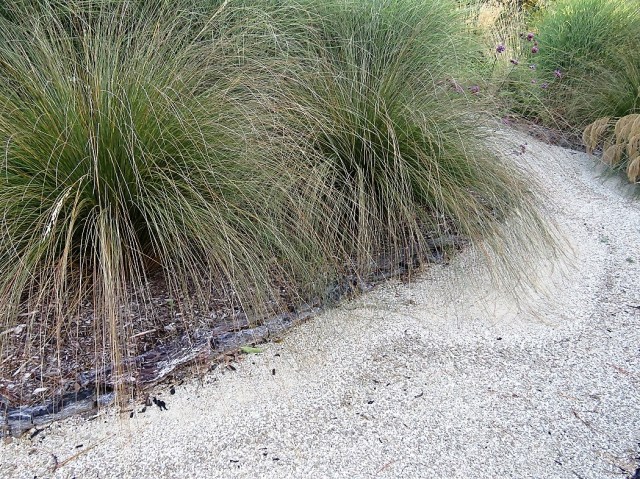
Despite my best effort to get the spacings right as I planted. the mistakes are now clear, mostly because I underestimated how large the plants would get. You can see from the markings on the path, how far out the grass stems are sweeping. I am fine with a bit of softening overhang but I also want to be able to walk through without getting wet legs. I need to move the right hand chionochloa back half a metre. Fine tuning, I call it.
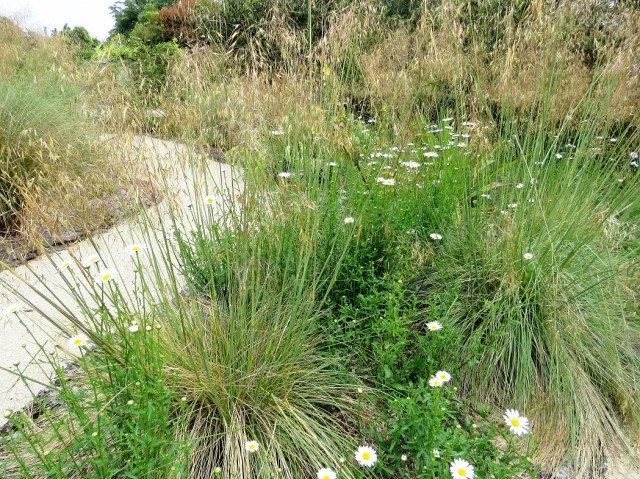
Again, thanks to digital photography, it is easy to track plant combinations through the seasons. I have been surprised that some have held for a good four months. This is just a simple combination of Stipa gigantea (golden oat grass) and ox-eye daisies as it looked when we opened the garden at the beginning of November.
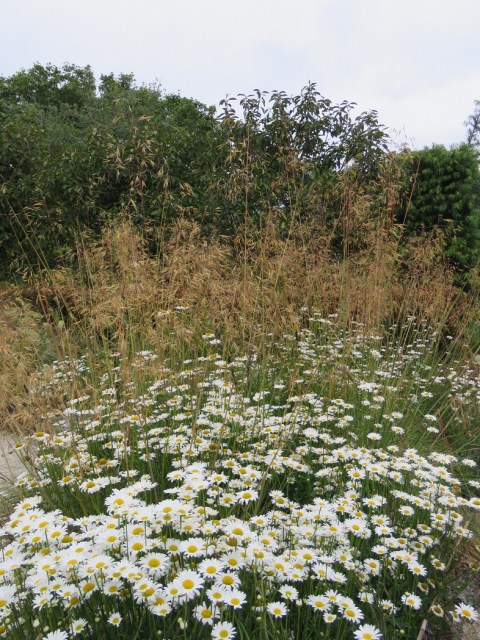
The same view in December. Aren’t those simple daisies simply glorious? As this mass display passed over, I cut them back to the rosettes at ground level.
This is the same spot in February. The daisies are having a second flush and i think if I get my timings right, it may be possible to get a third flush each year. The stipa has also held onto its sterile flowers and I did not expect these to hold for over four months.
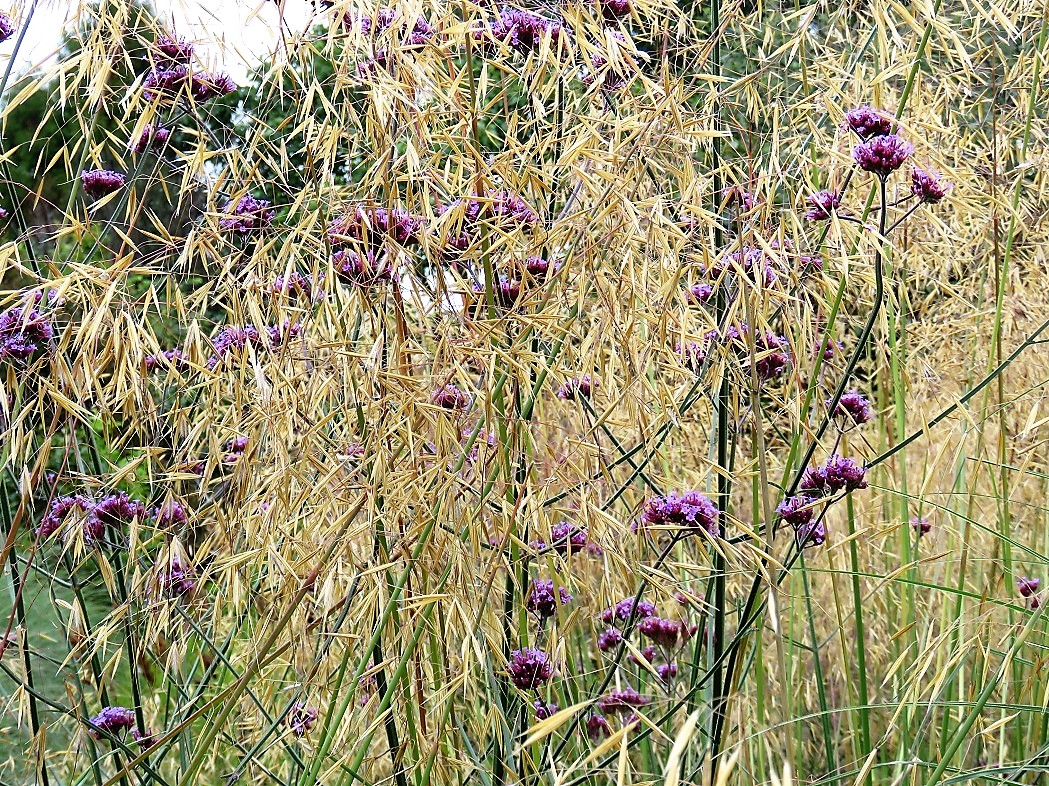
Back in mid December, I was delighted by the chance combination of a Verbena bonariensis that chose to seed in this spot by Stipa gigantea. I even took a short video of the gentle movement which was everything I aimed for in this garden but my tech skills let me down sometimes and I can’t work out how to upload it to this platform.
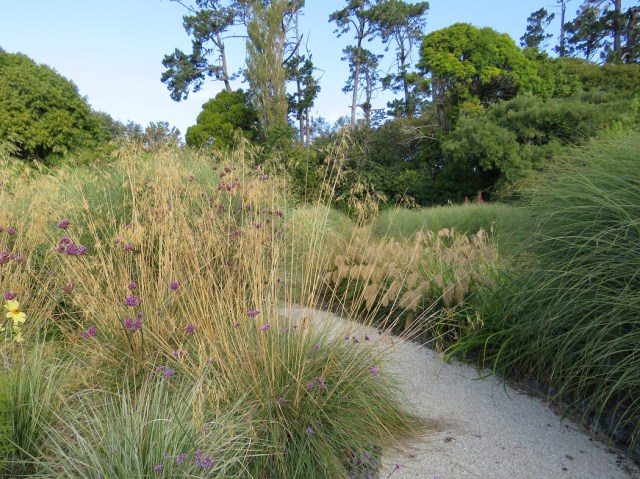
This is the same scene, two and a half months later. Still pretty, albeit past its fresh flush.
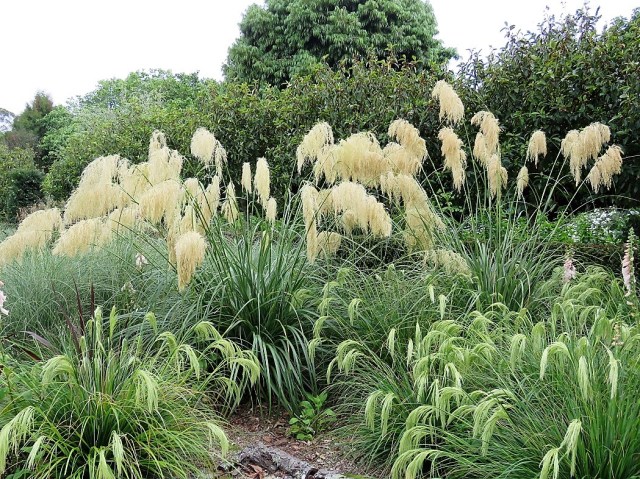
Who still declares that our native plants are boring? Mark said we must have our native toetoe in what is essentially a grass garden. I bought three plants on TradeMe (our equivalent of Ebay) and from memory, I think they are Austroderia fulvida. We have five species native to this country. The smaller plants are Chionochloa flavida, often sold as ‘dwarf toetoe’ although they are a different plant family.
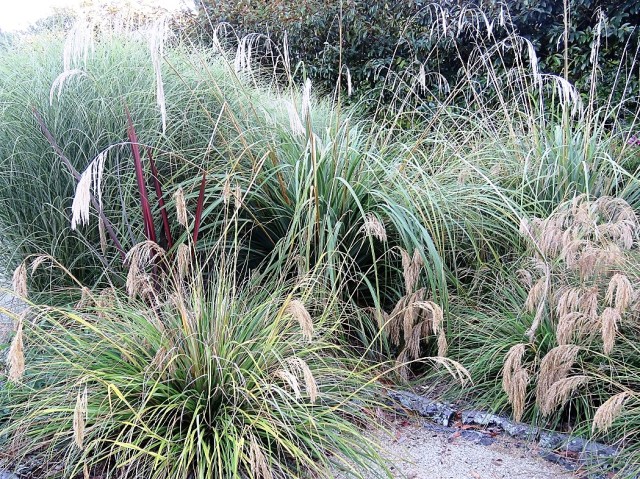
Four months later, the flower plumes are still holding, albeit a little tired as we go into autumn. This is not unreasonable on their part.
I think I am ready to give an interim report card on the key plants used in this garden but that will have to wait for another post. It will take another few years before I feel confident to recommend based on longer term performance but some trends are already clear. Pretty much all the plants used are readily available in this country.
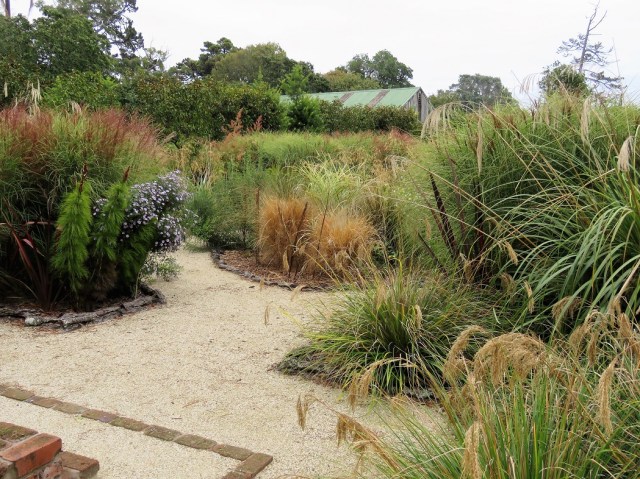

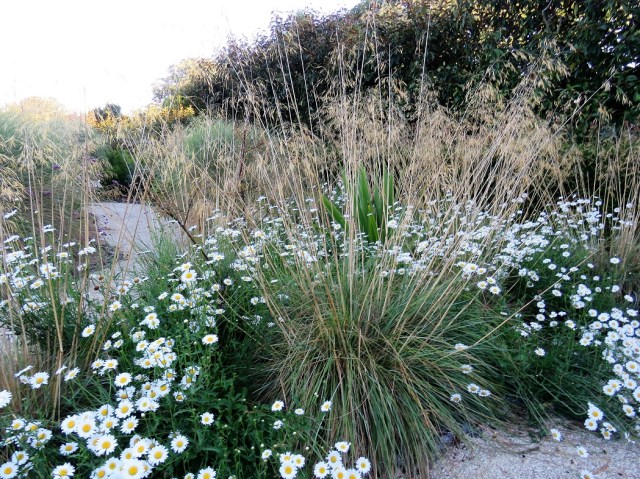
Abbie, I don’t have a chainsaw. Do you know how hard/tough it is to handsaw ponga for garden edging.
That is not ponga in that garden. It is pieces of pine bark that we get from our very old pine trees when they fall. Pine bark lasts for years.
It has been a wonderful success!
A bit too successful in some areas! But at least the concept and execution was sound, even if I now need to thin some of the plants.
It all looks wonderful and the toetoe and Chionochloa flavicans look fabulous. When we developed our grass garden 3 years ago we left a massive toetoe in the centre of the area and built the path to circumvent it. It was a great feature then, but 3 years on it has finally reached the age where it has lost definition, dividing itself into multiple clumps with lots of dead bits in the middle and it is starting to fall apart and flower less. So we’ve dug up a sizeable seedling from elsewhere and this winter the old one will come out and the replacement will take its place.
I remember you saying in a previous post that the Chionochloa wasn’t very long lived, and I thought that was the case too, but I’ve discovered one of ours that still looks good was planted back in 2007, so maybe they aren’t so bad after all.
I think Chionochloa flavicans can be patchy, which doesn’t matter so much unless it is used in larger amounts. I am going to try lifting and splitting ours to see it they get a fresh flush of enthusiastic growth. It may be a plant that needs refreshing more often than others. I am not sure what I will do when the toetoe passes over. Maybe quickly get a division off the plants so that I have something in reserve.
You may find toetoe seedlings like we do, though they seem to self seed only where our ground is pretty wet. Our Chionochloa that has lasted so well is in quite a lot of shade under trees: none that have been in the open have done as well for as long. I have divided some successfully in the past.
Useful info. Thanks.
Fabulous! The oxeye daisy especially brings a splash of joy. Can I ask what you put on the paths? Hoegl? They beautifully offset the green grasses.
The path is a custom 50/50 mix of crushed shell and crushed limestone and it compacts well, laid on a base of compacted pit metal. We are pleased with it.
Hi,
Out of interest I searched the web for Oxeye Daisy and found it listed on the Massey University Website as a weed – very unpopular with dairy farmers and difficult to eradicate.
But pretty to look at.
Ox-eye daisies is a pretty generic term. You would have to go to the species to determine which one one they are referring to. The one we have doesn’t set seed or sucker so it is hard to see that it is a problem but I don’t know it’s botanical name.